While John Wall stole the show in Las Vegas, there were a number of players with NBA experience who turned in notable performances in Orlando and Las Vegas alike. Though you always have to take Summer League production with a grain of salt, numerous players showcased significant development that is worth noting as we inch towards basketball season.
Jrue Holiday, 1990, 6'3, 185, Guard, Philadelphia 76ers
19.3 Points, 6 Assists, 4 Turnovers, 2 Rebounds, 1.6 Steals, 47.4% FG, 33.3% 3FG, 9.3 FTA, 64.3% FT
Jrue Holiday only played three games for the 76ers' Summer League team in Orlando, but was clearly the most dynamic overall player in attendance. Holiday struggled to stand out at this event last season with deferential play, and saw erratic playing time early in his rookie season before showing extremely well as he cemented his spot in Eddie Jordan's rotation down the stretch. Holiday's development as a point guard, improved consistency as a jump shooter, and comfort level with the speed of the NBA game were obvious late in the year, and manifested themselves in a pair of extremely productive Summer League performances.
It became obvious early in the week that Holiday was going to be given the keys to Philadelphia's offense despite the presence of second overall selection Evan Turner, and the UCLA product took full advantage. Whether he was turning the corner on the pick and roll or breaking his man down in one-on-one situations, Holiday played with outstanding confidence and used his body exceptionally well in traffic. He was the top assist-man in Orlando and finished as the top scorer as well. The North Hollywood native did a great job of determining when to attack and when to defer, and aside from a down game in an easy win over Boston, provided little evidence contrary to sentiments that he should be the 76ers' starting floor general on opening day, and a huge piece of their rebuilding effort moving forward.
Over the course of his summer campaign, Holiday reinforced many of the things that he showed last season that have the Philadelphia front office optimistic about his future. Despite not knocking down shots from beyond the arc at a high rate during his only season under Ben Howland, Holiday proved to be a high-caliber catch and shoot threat last season, and he continued to knock down shots from the perimeter in Orlando. He appeared prone to jumping slightly off balance on each of his contested pull ups from the midrange, and still has quite a bit of polish to add to that part of his game, but he was highly effective when he could get all the way to the rim and use his creativity to finish. He was also able to the line at an astounding rate, exploiting the quick whistles typical of the Summer League by drawing contact frequently in the paint.
Defensively, Holiday had some moments of brilliance denying penetration and fighting through screens, and showed a degree of intensity that you almost never see from a legitimate NBA player in the Summer League. Though he's prone to over-committing to helping his teammates at times, Holiday is the type of smart, savvy defender that coaches love.
While Holiday is not likely to dominate the ball next season to the extent that he did in Orlando, but one can't discount his intensity and the change in his demeanor since this time last season. He's regained much of the swagger that made him such a highly coveted prospect going into college, and has learned to use his outstanding physical advantages and terrific basketball IQ to his advantage on a daily basis now. He'll enter next season as one of the youngest players in the NBA still, and has painstakingly improved his skill set and turned himself into a very complete basketball player.
It became obvious early in the week that Holiday was going to be given the keys to Philadelphia's offense despite the presence of second overall selection Evan Turner, and the UCLA product took full advantage. Whether he was turning the corner on the pick and roll or breaking his man down in one-on-one situations, Holiday played with outstanding confidence and used his body exceptionally well in traffic. He was the top assist-man in Orlando and finished as the top scorer as well. The North Hollywood native did a great job of determining when to attack and when to defer, and aside from a down game in an easy win over Boston, provided little evidence contrary to sentiments that he should be the 76ers' starting floor general on opening day, and a huge piece of their rebuilding effort moving forward.
Over the course of his summer campaign, Holiday reinforced many of the things that he showed last season that have the Philadelphia front office optimistic about his future. Despite not knocking down shots from beyond the arc at a high rate during his only season under Ben Howland, Holiday proved to be a high-caliber catch and shoot threat last season, and he continued to knock down shots from the perimeter in Orlando. He appeared prone to jumping slightly off balance on each of his contested pull ups from the midrange, and still has quite a bit of polish to add to that part of his game, but he was highly effective when he could get all the way to the rim and use his creativity to finish. He was also able to the line at an astounding rate, exploiting the quick whistles typical of the Summer League by drawing contact frequently in the paint.
Defensively, Holiday had some moments of brilliance denying penetration and fighting through screens, and showed a degree of intensity that you almost never see from a legitimate NBA player in the Summer League. Though he's prone to over-committing to helping his teammates at times, Holiday is the type of smart, savvy defender that coaches love.
While Holiday is not likely to dominate the ball next season to the extent that he did in Orlando, but one can't discount his intensity and the change in his demeanor since this time last season. He's regained much of the swagger that made him such a highly coveted prospect going into college, and has learned to use his outstanding physical advantages and terrific basketball IQ to his advantage on a daily basis now. He'll enter next season as one of the youngest players in the NBA still, and has painstakingly improved his skill set and turned himself into a very complete basketball player.
Terrence Williams, 1987, 6'6, 220, Shooting Guard / Small Forward, New Jersey Nets
18.8 Points, 5 Assists, 4.2 Turnovers, 3 Rebounds, 1 Steal, 44.2% FG, 6.2 FTA, 64.5% FT, 50.0% 3FG
Much like Jrue Holiday, Terrence Williams had a mediocre showing in last year's Summer League joint venture between the New Jersey Nets and Philadelphia 76ers, but proved to be one of the most productive players at this year's event. Williams scored 22 or more points in the Nets' first four games before seeing just 5 minutes in their last contest due to an illness. After showing well late in what was a season to forget in New Jersey, Williams is slated to be an important part of an improved Nets backcourt and performed as such in Orlando.
With Derrick Favors still getting up to speed in the Nets first few Summer League games, Terrence Williams took full advantage of being his team's unquestioned go-to guy, using a sizeable 21.4 possessions per-game and functioning as his team's primary ball-handler and offensive facilitator. Arguably the top athlete in attendance, Williams was extremely assertive, both with his dribble and his jump shot. He won't have nearly as many touches at his disposal next season, but after a slow start in the first game, the Louisville product was at his best attacking the rim, showcasing his ability to play above the rim and fight through contact.
When he wasn't getting to the rim, Williams was showcasing his midrange jumper. Last season, Williams ranked neared the bottom of the League amongst guards in jump shooting efficiency off the dribble, but knocked down pull-up shot and pull-up shot after some struggles early. Williams seems to have developed a rhythm that he's especially comfortable with when attacking off the dribble with his right hand, but made some shots going left as well. Still erratic with his shot selection, Williams still needs to develop his catch and shoot game to become a complete off-ball threat offensive, but he showed significant improvement in arguably his weakest area in Orlando.
When Williams wasn't looking for his own offense, he had some good and bad moments distributing the ball. His first step and strength allows him to get to where he wants on the floor, and he used the pick and roll pretty effectively, however, he's still turnover prone and doesn't always mix his playmaking and scoring effectively. The latter was clear as he struggled to get the ball to Derrick Favors when the pair were on the floor together, and the fact that the rookie had his best game of the summer league with Williams out of the lineup in New Jersey's final game doesn't bode well in his favor.
Similarly, Williams was hit or miss defensively this week, especially with his effort level when closing out, but he has all the tools to effectively defend three positions and made that abundantly clear whenever his man tried to take him one on one. As is the case with most players with NBA contracts participating in the Summer League, Williams' defensive doesn't paint a picture of the intensity he shows during the regular season.
On the whole, Williams' Summer League performance isn't a great representation of what we can expect from him next season. He won't dominate the ball near as frequently playing next to Devin Harris, and will see many of his pick and roll touches shift to spot-up opportunities where he'll continue to be tested as a catch and shoot threat. Regardless of his role next season, Williams' improved pull-up game and consistency finishing at the rim made him a top performer in Orlando, and both of those skills will play a key role in how he impacts the Nets rebuilding process next season.
With Derrick Favors still getting up to speed in the Nets first few Summer League games, Terrence Williams took full advantage of being his team's unquestioned go-to guy, using a sizeable 21.4 possessions per-game and functioning as his team's primary ball-handler and offensive facilitator. Arguably the top athlete in attendance, Williams was extremely assertive, both with his dribble and his jump shot. He won't have nearly as many touches at his disposal next season, but after a slow start in the first game, the Louisville product was at his best attacking the rim, showcasing his ability to play above the rim and fight through contact.
When he wasn't getting to the rim, Williams was showcasing his midrange jumper. Last season, Williams ranked neared the bottom of the League amongst guards in jump shooting efficiency off the dribble, but knocked down pull-up shot and pull-up shot after some struggles early. Williams seems to have developed a rhythm that he's especially comfortable with when attacking off the dribble with his right hand, but made some shots going left as well. Still erratic with his shot selection, Williams still needs to develop his catch and shoot game to become a complete off-ball threat offensive, but he showed significant improvement in arguably his weakest area in Orlando.
When Williams wasn't looking for his own offense, he had some good and bad moments distributing the ball. His first step and strength allows him to get to where he wants on the floor, and he used the pick and roll pretty effectively, however, he's still turnover prone and doesn't always mix his playmaking and scoring effectively. The latter was clear as he struggled to get the ball to Derrick Favors when the pair were on the floor together, and the fact that the rookie had his best game of the summer league with Williams out of the lineup in New Jersey's final game doesn't bode well in his favor.
Similarly, Williams was hit or miss defensively this week, especially with his effort level when closing out, but he has all the tools to effectively defend three positions and made that abundantly clear whenever his man tried to take him one on one. As is the case with most players with NBA contracts participating in the Summer League, Williams' defensive doesn't paint a picture of the intensity he shows during the regular season.
On the whole, Williams' Summer League performance isn't a great representation of what we can expect from him next season. He won't dominate the ball near as frequently playing next to Devin Harris, and will see many of his pick and roll touches shift to spot-up opportunities where he'll continue to be tested as a catch and shoot threat. Regardless of his role next season, Williams' improved pull-up game and consistency finishing at the rim made him a top performer in Orlando, and both of those skills will play a key role in how he impacts the Nets rebuilding process next season.
Derrick Brown, 1987, 6'7, 225, Forward, Charlotte Bobcats
15.2 Points, 7 Rebounds, 0.8 Assists, 0.8 Steals, 3 Turnovers, 51.9% FG, 5 FTA, 72.0% FT
Derrick Brown wasn't quite as productive as some of the other players we're covering here, but he was impressive in his own right in four games in Orlando. Brown saw a little under 10 minutes per-game for Larry Brown's Bobcats last season, posting respectable numbers for a spot player and flashing an occasional sign of perimeter skill. Playing most of his minutes at the four spot, Brown struggled to compete with bigger and stronger players, but his athleticism allowed him to show flashes of promise on the few occasions that he did get a chance to operate offensively.
Gerald Henderson did quite a bit of the scoring for the Bobcats Summer League team, but Derrick Brown relished his opportunities to operate in one-on-one situation and constantly scrapped for easy looks around the basket. The most impressive facet of Brown's campaign in Orlando was the frequency with which he was able to put the ball on the floor and get to the rim off the dribble, something we almost never saw from him in college. Brown has always been a tremendous athlete, but is beginning to develop the tools that will allow him to exploit his physical profile on the NBA level. While he still isn't comfortable changing direction at full speed with the ball, he looked comfortable using his body to shield the ball as he exploited slower defenders and used his leaping ability to finish at the rim.
In order to set up his drives, Brown frequently relied on simple shot fakes, and while he hit a few jumpers throughout the week, his shot is still a major work in progress. He needs to improve his mechanics and confidence in spot up situations, but seemed comfortable and in rhythm when attempting one-dribble pull ups when driving right. The development of his jump shot will likely dictate the scope of his role on the offensive end in coming seasons, as it will help open up his budding floor game.
In addition to attacking well from the perimeter and when facing up from the midrange, Brown crashed the rim aggressively, and was very active moving without the ball as his teammates tried to get to the rim off the dribble. The Xavier product showed the same energy on the defensive end and as a rebounder. Brown has the tools to be a very nice role-player, but was clearly still getting comfortable defending the perimeter in Orlando.
With the depth Charlotte has returning at both forward positions, Brown isn't in position to receive much playing time this season, but the improvement he showed in Orlando leave room for cautious optimism. He's developed some things in practice and if he can develop his jump shot by this time next year, he could be an intriguing player to keep tabs on.
Gerald Henderson did quite a bit of the scoring for the Bobcats Summer League team, but Derrick Brown relished his opportunities to operate in one-on-one situation and constantly scrapped for easy looks around the basket. The most impressive facet of Brown's campaign in Orlando was the frequency with which he was able to put the ball on the floor and get to the rim off the dribble, something we almost never saw from him in college. Brown has always been a tremendous athlete, but is beginning to develop the tools that will allow him to exploit his physical profile on the NBA level. While he still isn't comfortable changing direction at full speed with the ball, he looked comfortable using his body to shield the ball as he exploited slower defenders and used his leaping ability to finish at the rim.
In order to set up his drives, Brown frequently relied on simple shot fakes, and while he hit a few jumpers throughout the week, his shot is still a major work in progress. He needs to improve his mechanics and confidence in spot up situations, but seemed comfortable and in rhythm when attempting one-dribble pull ups when driving right. The development of his jump shot will likely dictate the scope of his role on the offensive end in coming seasons, as it will help open up his budding floor game.
In addition to attacking well from the perimeter and when facing up from the midrange, Brown crashed the rim aggressively, and was very active moving without the ball as his teammates tried to get to the rim off the dribble. The Xavier product showed the same energy on the defensive end and as a rebounder. Brown has the tools to be a very nice role-player, but was clearly still getting comfortable defending the perimeter in Orlando.
With the depth Charlotte has returning at both forward positions, Brown isn't in position to receive much playing time this season, but the improvement he showed in Orlando leave room for cautious optimism. He's developed some things in practice and if he can develop his jump shot by this time next year, he could be an intriguing player to keep tabs on.
Other Notable Performers
Byron Mullens, 1989, 7'0, 260, Center, Oklahoma City Thunder
16.0 Points, 6.3 Rebounds, 2.3 Turnovers, 48.8% FG, 66.7% FT
The second leading scorer on what amounted to a veritable Summer League All-Star team, Byron Mullens was a very pleasant surprise in Orlando. He struggled notably at times, but looked more comfortable on the block despite not finishing all of his opportunities with his back to the basket. He flashed some intriguing up and under moves from the left block and beat his man off the dribble facing up from the right side on more than a few occasions. Though he wasn't always finishing the play, Mullens showed much better timing on his cuts and when ducking in down low. On a few occasions, Mullens stepped away from the rim to show off his jumper, but he's at his best using his physical tools down low, and it appears that he's beginning to play with the energy and intensity that would allow him to become a useful NBA player.
Defensively, Mullens took very few risks and seemed to let his size do the work for him and not make the mistakes that plague most young big men. While that is a promising sign, Mullens still needs to continue to improve his activity level on the floor to become a better defensive rebounder and show that he can stay out of foul trouble against better competition. With Cole Aldrich entering the fold, this will be a pivotal season for Mullens to earn minutes and accelerate his development or continue learning from the bench or the Thunder's D-League squad, Tulsa.
Defensively, Mullens took very few risks and seemed to let his size do the work for him and not make the mistakes that plague most young big men. While that is a promising sign, Mullens still needs to continue to improve his activity level on the floor to become a better defensive rebounder and show that he can stay out of foul trouble against better competition. With Cole Aldrich entering the fold, this will be a pivotal season for Mullens to earn minutes and accelerate his development or continue learning from the bench or the Thunder's D-League squad, Tulsa.
Mustafa Shakur, 1984, 6'5, 185, Point Guard, Oklahoma City Thunder
10.2 Points, 3.6 Assists, 2 Rebounds, 1.2 Steals, 48.5% FG, 41.7% 3FG, 87.5% FT
It has been a while since we've checked in on Shakur, who has made notable strides since leaving Arizona. After stints with Prokom Trefl of Poland and the Euroleague and TAU Ceramica (now Caja Laboral), Shakur exploded in the NBADL last season, showing some new wrinkles to his skill set that make him a much more viable NBA talent. He's a considerably better shooter than he was as a collegian, improving his mechanics and forcing teams to respect his range in catch and shoot situations. His improved range and confidence off the dribble have opened up his floor game. Showing a knack for playing with pace, seeing the floor better, and making much better decisions with the ball than he did in the past thanks to his increased maturity level and basketball IQ, Shakur is a clear-cut NBA caliber player when you factor in his outstanding physical tools.













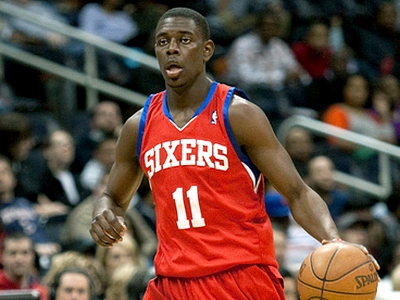
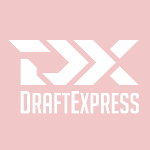
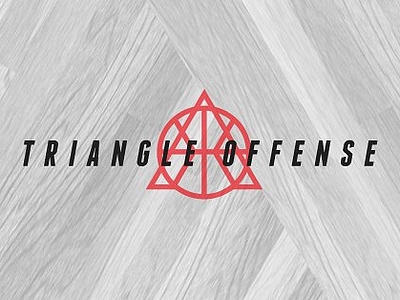
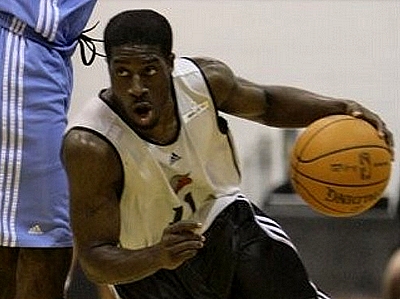




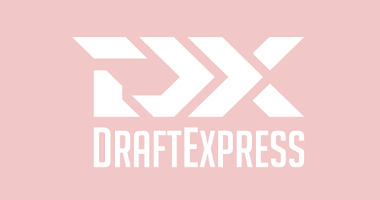















Comments